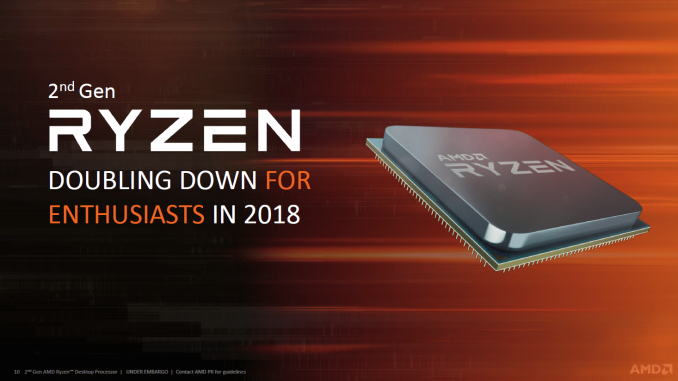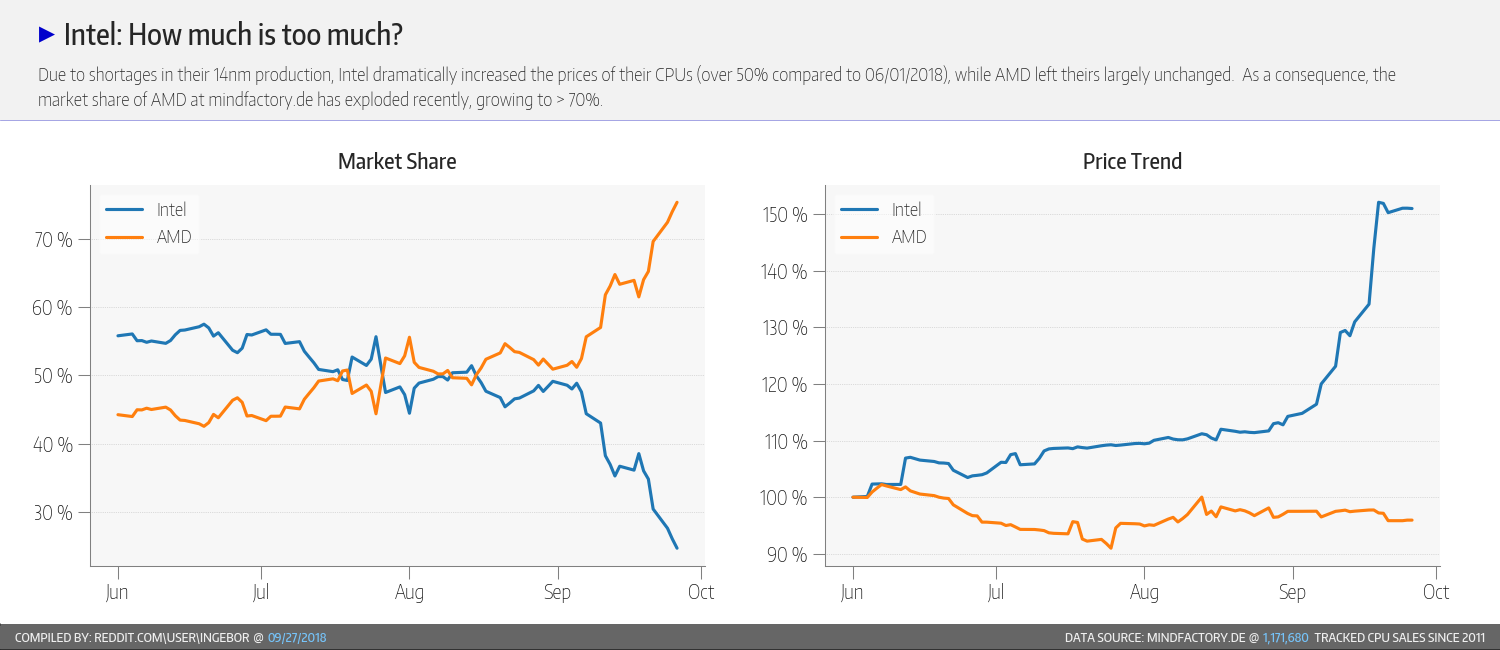
Due to the shortage of 14nm products from Intel and the resulting high prices, Ryzen sales are rising rapidly, as the Mindfactory sales figures show.
Intel’s production problems grow AMD’s sales
The continuing shortages in Intel’s 14nm production are still a problem for the company. The world’s largest chip manufacturer is currently experiencing massive problems with the production of its desktop processors due to the misplanning of chipsets, the delay in the 10nm production process and the production of iPhone modems in 14nm. However, Intel is currently unable to fulfill the demand on processors. As a reaction, the company plans to invest one billion US dollars in 14nm production. For this, Intel wants to clone a whole factory.
A big profiteer of the situation, is Intel’s biggest rival in the processor business. AMD can currently produce its own Ryzen processors without any bottlenecks at Globalfoundries and later at TSMC. According to an analysis, the Californian company could even triple its own market share in processors. This should mainly affect the server and enterprise segments where Intel’s dominating with Xeon and its own desktop processors. Manufacturers such as HP and Dell have announced that they will increasingly rely on AMD in the future. Thus, both the share of Epyc processors in servers and the share of Ryzen processors in notebooks and desktops could rise significantly as a result of Intel’s inability to deliver. This trend is also reflected at a large German retailer.
Mindfactory: Ryzen sales rise rapidly
The retailer Mindfactory is practically the only retailer at all who gives exact sales figures. This makes statistics possible that show the buying behaviour. The Reddit user ingebor made statistics that show exactly how the market reacts to high Intel prices and poor availability. While a few weeks ago the total sales figures for Ryzen and Coffee Lake processors were almost the same, the share of AMD processors exploded at the beginning of September. More than 80 percent of customers bought an AMD processor, while only 20 percent bought Intel processors.

ingebor also shows this in relation to the price. The price of AMD processors has even fallen slightly since June 2018. On the other hand, the price for the Intel processors rose constantly by 10 percent until September and then exploded to over 50 percent. The top model i7-8700K costs a good 480 Euros at Mindfactory, while the Ryzen 7 2700X only costs 310 Euros. It’s almost worse for mid-range processors. The i5-8600K currently costs about 340 Euros at Mindfactory, while the i5-8400 costs about 290 Euros. Even the i7-8086K is curiously as expensive as the i7-8700K. AMD, on the other hand, can impress with low prices for both Ryzen generations. The top seller Ryzen 5 1600 now only costs about 140 Euros.
No better prices in sight
The situation is currently more than fatal for Intel. Although the consumer sector is one of the first to suffer, supply bottlenecks also affect the company’s server, notebook and enterprise segments. According to an analysis, prices are not expected to fall until the second quarter of 2019. The final better prices will probably only come with running 10nm production. Intel’s new generation called Coffee Lake Refresh will also be affected by the crisis. Interested customers should expect high prices for the first mainstream 8-core processors named i9-9900K and i7-9700K.

Be the first to comment